-
 Bitcoin
Bitcoin $117600
-0.94% -
 Ethereum
Ethereum $3567
4.03% -
 XRP
XRP $3.422
5.29% -
 Tether USDt
Tether USDt $1.001
0.05% -
 BNB
BNB $741.2
2.18% -
 Solana
Solana $177.2
1.33% -
 USDC
USDC $0.9998
-0.01% -
 Dogecoin
Dogecoin $0.2432
13.70% -
 TRON
TRON $0.3277
3.88% -
 Cardano
Cardano $0.8322
3.44% -
 Hyperliquid
Hyperliquid $44.93
-3.85% -
 Stellar
Stellar $0.4712
0.77% -
 Sui
Sui $3.866
-3.70% -
 Chainlink
Chainlink $18.07
5.32% -
 Hedera
Hedera $0.2688
9.36% -
 Bitcoin Cash
Bitcoin Cash $515.8
3.87% -
 Avalanche
Avalanche $23.95
4.68% -
 Shiba Inu
Shiba Inu $0.00001493
3.69% -
 UNUS SED LEO
UNUS SED LEO $8.921
0.92% -
 Toncoin
Toncoin $3.235
0.73% -
 Litecoin
Litecoin $104.5
3.15% -
 Polkadot
Polkadot $4.335
2.58% -
 Uniswap
Uniswap $10.29
14.69% -
 Monero
Monero $330.8
-2.86% -
 Bitget Token
Bitget Token $4.904
2.83% -
 Ethena USDe
Ethena USDe $1.001
0.09% -
 Pepe
Pepe $0.00001336
-2.18% -
 Dai
Dai $0.9999
0.01% -
 Aave
Aave $320.5
-1.28% -
 Cronos
Cronos $0.1189
6.16%
Are physical items attached to NFTs?
NFTs can represent ownership claims to physical items through smart contracts, but they do not inherently possess the tangible goods themselves.
Jul 18, 2025 at 06:29 am
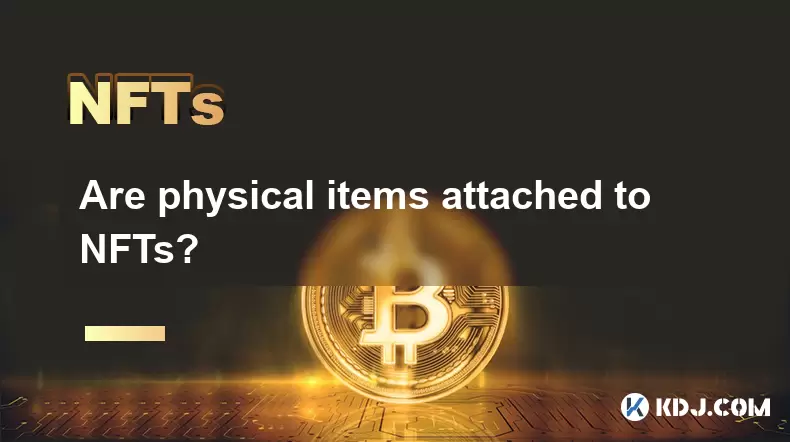
Understanding the Relationship Between NFTs and Physical Items
Non-Fungible Tokens (NFTs) are unique digital assets stored on a blockchain, primarily representing ownership of digital content such as images, videos, music, or virtual real estate. However, one common question that arises is whether these tokens can be linked to physical items.
In essence, an NFT itself is a digital certificate of ownership, not the item it represents—whether digital or physical. This means that while an NFT can represent a claim or association with a physical object, it does not inherently possess or embody that object. The key lies in how creators or sellers structure the relationship between the NFT and the physical asset.
How NFTs Can Represent Ownership of Physical Goods
Some creators and brands have begun to explore ways to tie NFTs to tangible goods. For example, luxury fashion houses have issued NFTs that accompany the purchase of high-end apparel or accessories. In such cases, the NFT acts as a digital twin or proof of authenticity for the physical item.
One method of linking involves using smart contracts embedded within the NFT. These contracts can include clauses or access codes that grant the owner rights to redeem or claim a corresponding physical product. For instance, purchasing an NFT from a limited-edition sneaker collection might entitle the holder to receive the actual sneakers after minting or during a specified redemption period.
It’s important to note that this linkage requires trust in the issuer or platform. Since blockchain technology cannot verify the existence or delivery of physical items autonomously, the process relies heavily on the reputation and reliability of the issuing party.
Examples of NFT-Physical Item Integrations
Several notable projects have successfully bridged the gap between the digital and physical worlds. One such case includes digital collectibles paired with real-world memorabilia. A sports-themed NFT collection may offer holders the chance to obtain autographed jerseys or signed trading cards upon presenting their NFT credentials.
Another application is in the art world. Some contemporary artists sell physical paintings alongside NFTs, where the token serves as both a provenance record and a digital replica. Buyers can choose to keep both or sell either separately, though the value often depends on how tightly the two are linked.
Additionally, event tickets and merchandise bundles have been sold as NFTs. Attendees who purchase such NFTs gain access to concerts or conferences and may also receive physical souvenirs like T-shirts or posters, redeemable through a verification system connected to the NFT wallet.
Challenges in Binding NFTs to Real-World Objects
Despite the growing trend, several challenges persist when trying to attach physical items to NFTs. One major issue is logistics. How does a decentralized system ensure the secure and timely delivery of a physical product? Unlike digital files, which can be instantly transferred over the internet, physical goods require shipping, storage, and handling.
Another concern revolves around fraud and counterfeiting. If someone mints an NFT claiming it's tied to a rare physical item, there's no automatic way for buyers to verify this without trusting third-party verification systems or centralized authorities.
Furthermore, legal frameworks around intellectual property and ownership rights remain unclear. Just because you own an NFT doesn’t necessarily mean you own the copyright to the associated image or even the right to use the linked physical object. These nuances must be clearly outlined in the smart contract or terms of sale.
Technical Mechanisms Behind NFT-Physical Pairing
To establish a connection between an NFT and a physical item, developers often utilize off-chain and on-chain integrations. Off-chain data might include URLs, QR codes, or serial numbers that correspond to the physical item. On-chain, this information can be encoded into the NFT metadata or referenced via a decentralized file system like IPFS.
One approach involves minting NFTs with embedded redemption keys. When a buyer purchases the NFT, they receive a unique code that can be used to unlock access to the physical product. This code might be redeemable via a dedicated website or through customer support channels.
Alternatively, some platforms implement wallet-based authentication. By verifying ownership of a specific NFT wallet address, companies can dispatch physical items directly to the associated owner, provided personal details have been submitted securely.
FAQ: Frequently Asked Questions About NFTs and Physical Items
Q1: Can I return a physical item linked to an NFT if I’m unsatisfied?
Most NFT-based physical item transactions operate under standard e-commerce return policies. However, returns depend entirely on the seller’s terms since blockchain transactions themselves are irreversible.
Q2: Is the physical item transferable if I sell the NFT?
Generally, unless explicitly stated otherwise, selling the NFT does not automatically transfer the physical item. The original owner must complete any necessary redemption or shipment before transferring ownership.
Q3: How do I verify the authenticity of a physical item linked to an NFT?
Verification usually occurs through a combination of blockchain checks and manufacturer validation. Some brands provide tools to cross-reference NFT ownership with product serial numbers or certificates of authenticity.
Q4: Are there marketplaces that specialize in NFT-physical hybrid products?
Yes, platforms like Rarible, OpenSea, and specialized boutique marketplaces now offer hybrid listings where NFTs come with options to redeem physical goods. Always check the item description and terms before purchasing.
Disclaimer:info@kdj.com
The information provided is not trading advice. kdj.com does not assume any responsibility for any investments made based on the information provided in this article. Cryptocurrencies are highly volatile and it is highly recommended that you invest with caution after thorough research!
If you believe that the content used on this website infringes your copyright, please contact us immediately (info@kdj.com) and we will delete it promptly.
- BlockDAG, Jupiter, Aptos: Decoding the Hottest Crypto Plays
- 2025-07-18 23:10:13
- XRP, Bitcoin, and Price Predictions: Decoding the Crypto Crystal Ball
- 2025-07-18 23:10:13
- Binance, Chainbase, and Trading: Riding the Crypto Wave in 2025
- 2025-07-18 22:30:13
- DALPY Coin's Exchange Listing Buzz: Decoding the Blockchain Signals
- 2025-07-18 22:30:13
- Giants Protocol's G Token Live Launch: What You Need to Know
- 2025-07-18 21:30:13
- Solana, Rollblock, and the Gaming Token Revolution: What's Hot Now?
- 2025-07-18 22:10:13
Related knowledge
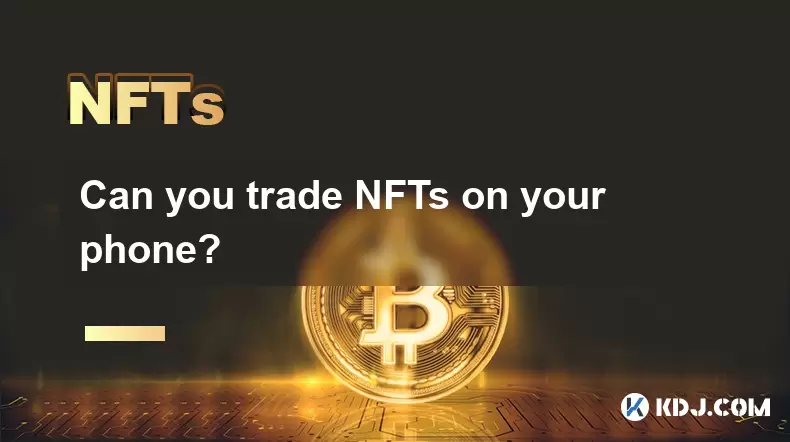
Can you trade NFTs on your phone?
Jul 18,2025 at 04:29am
Trading NFTs on Mobile DevicesYes, you can trade NFTs on your phone, and the process has become increasingly streamlined thanks to a variety of mobile...
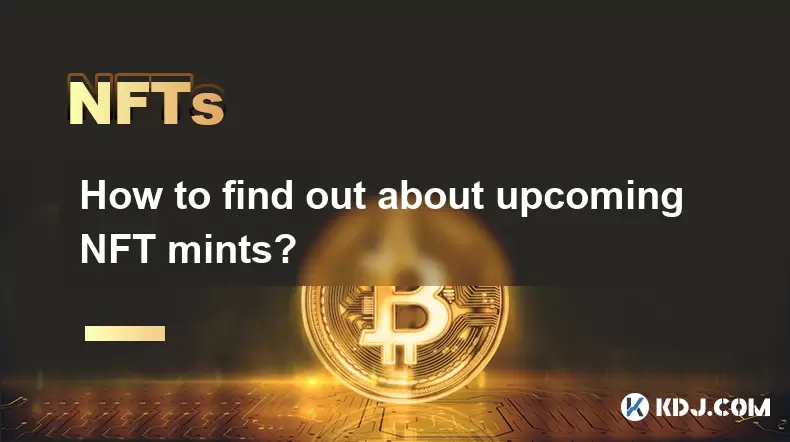
How to find out about upcoming NFT mints?
Jul 18,2025 at 11:50am
Exploring NFT Minting OpportunitiesUnderstanding the landscape of upcoming NFT mints is crucial for collectors, investors, and creators who wish to st...
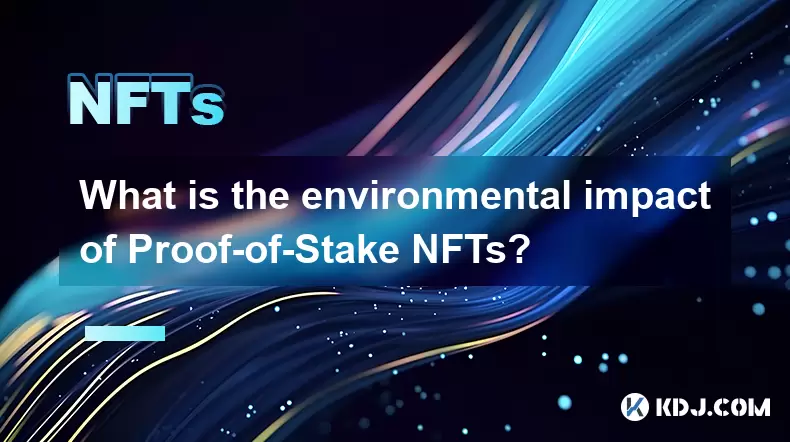
What is the environmental impact of Proof-of-Stake NFTs?
Jul 17,2025 at 07:14pm
Understanding the Basics of Proof-of-Stake NFTsProof-of-Stake (PoS) is a consensus mechanism used by blockchain networks to validate transactions and ...
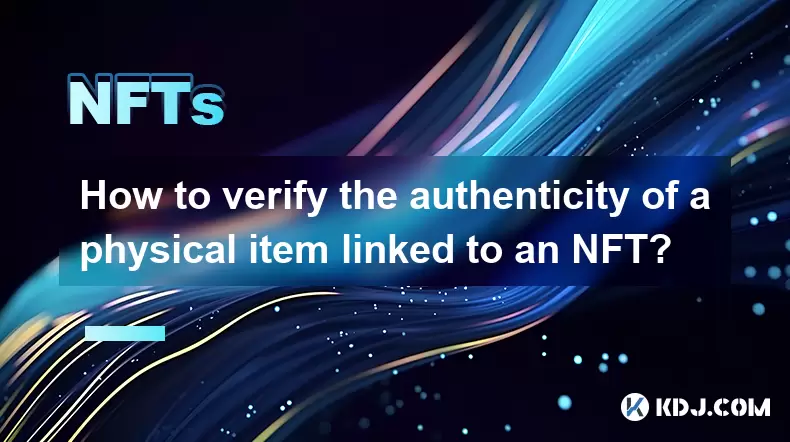
How to verify the authenticity of a physical item linked to an NFT?
Jul 18,2025 at 03:07pm
Understanding the Link Between NFTs and Physical ItemsWhen an NFT is linked to a physical item, it essentially acts as a digital certificate of owners...
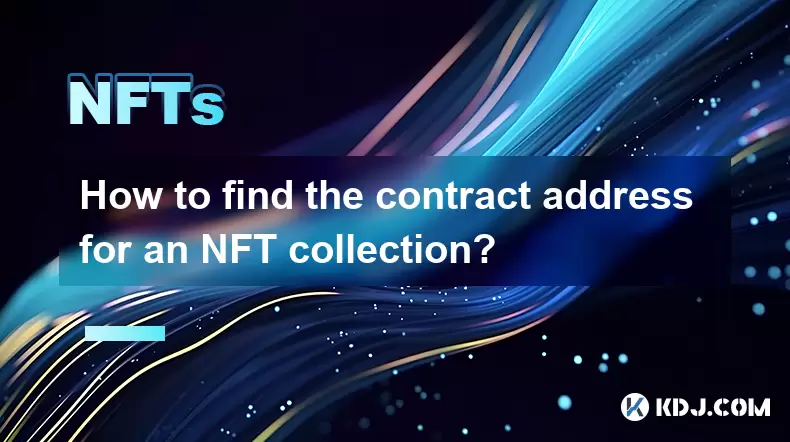
How to find the contract address for an NFT collection?
Jul 18,2025 at 11:56am
Understanding What a Contract Address IsIn the world of non-fungible tokens (NFTs), a contract address is a unique identifier assigned to a smart cont...
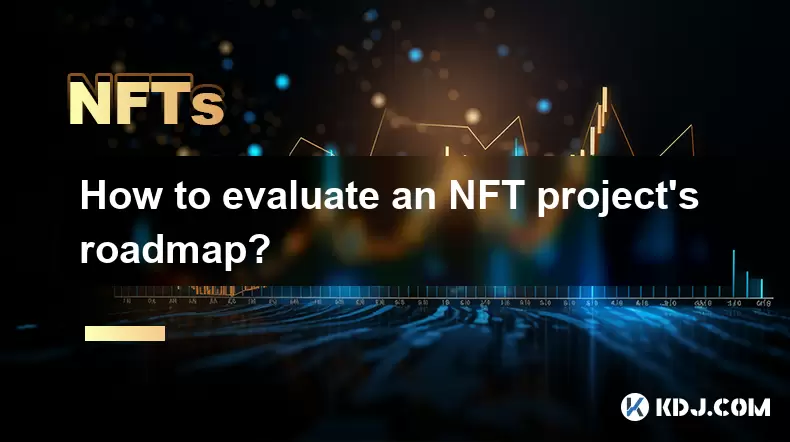
How to evaluate an NFT project's roadmap?
Jul 18,2025 at 01:21am
Understanding the Basics of an NFT Project RoadmapAn NFT project's roadmap is a strategic document that outlines the short-term and long-term goals of...

Can you trade NFTs on your phone?
Jul 18,2025 at 04:29am
Trading NFTs on Mobile DevicesYes, you can trade NFTs on your phone, and the process has become increasingly streamlined thanks to a variety of mobile...

How to find out about upcoming NFT mints?
Jul 18,2025 at 11:50am
Exploring NFT Minting OpportunitiesUnderstanding the landscape of upcoming NFT mints is crucial for collectors, investors, and creators who wish to st...

What is the environmental impact of Proof-of-Stake NFTs?
Jul 17,2025 at 07:14pm
Understanding the Basics of Proof-of-Stake NFTsProof-of-Stake (PoS) is a consensus mechanism used by blockchain networks to validate transactions and ...

How to verify the authenticity of a physical item linked to an NFT?
Jul 18,2025 at 03:07pm
Understanding the Link Between NFTs and Physical ItemsWhen an NFT is linked to a physical item, it essentially acts as a digital certificate of owners...

How to find the contract address for an NFT collection?
Jul 18,2025 at 11:56am
Understanding What a Contract Address IsIn the world of non-fungible tokens (NFTs), a contract address is a unique identifier assigned to a smart cont...

How to evaluate an NFT project's roadmap?
Jul 18,2025 at 01:21am
Understanding the Basics of an NFT Project RoadmapAn NFT project's roadmap is a strategic document that outlines the short-term and long-term goals of...
See all articles

























































































